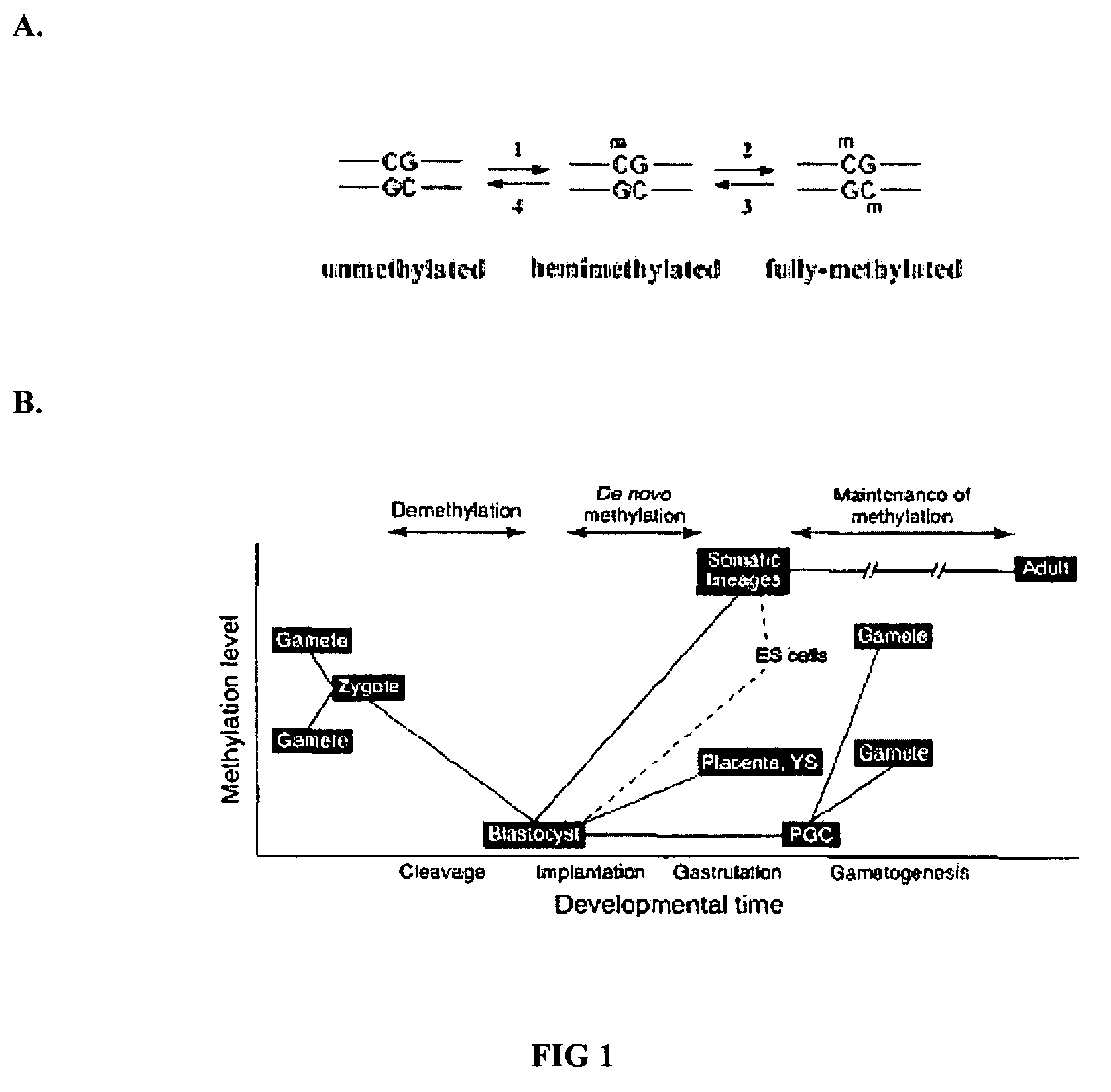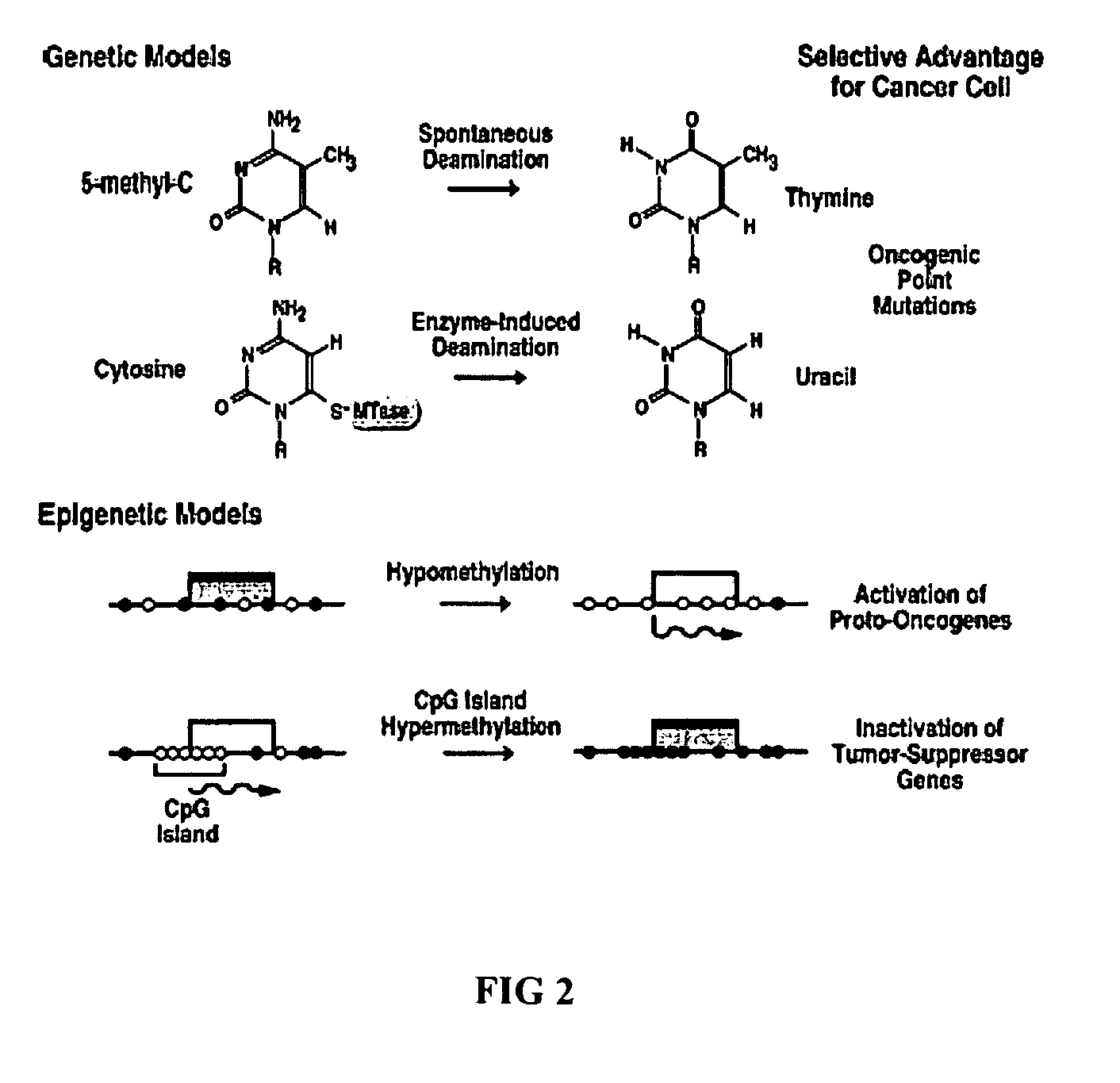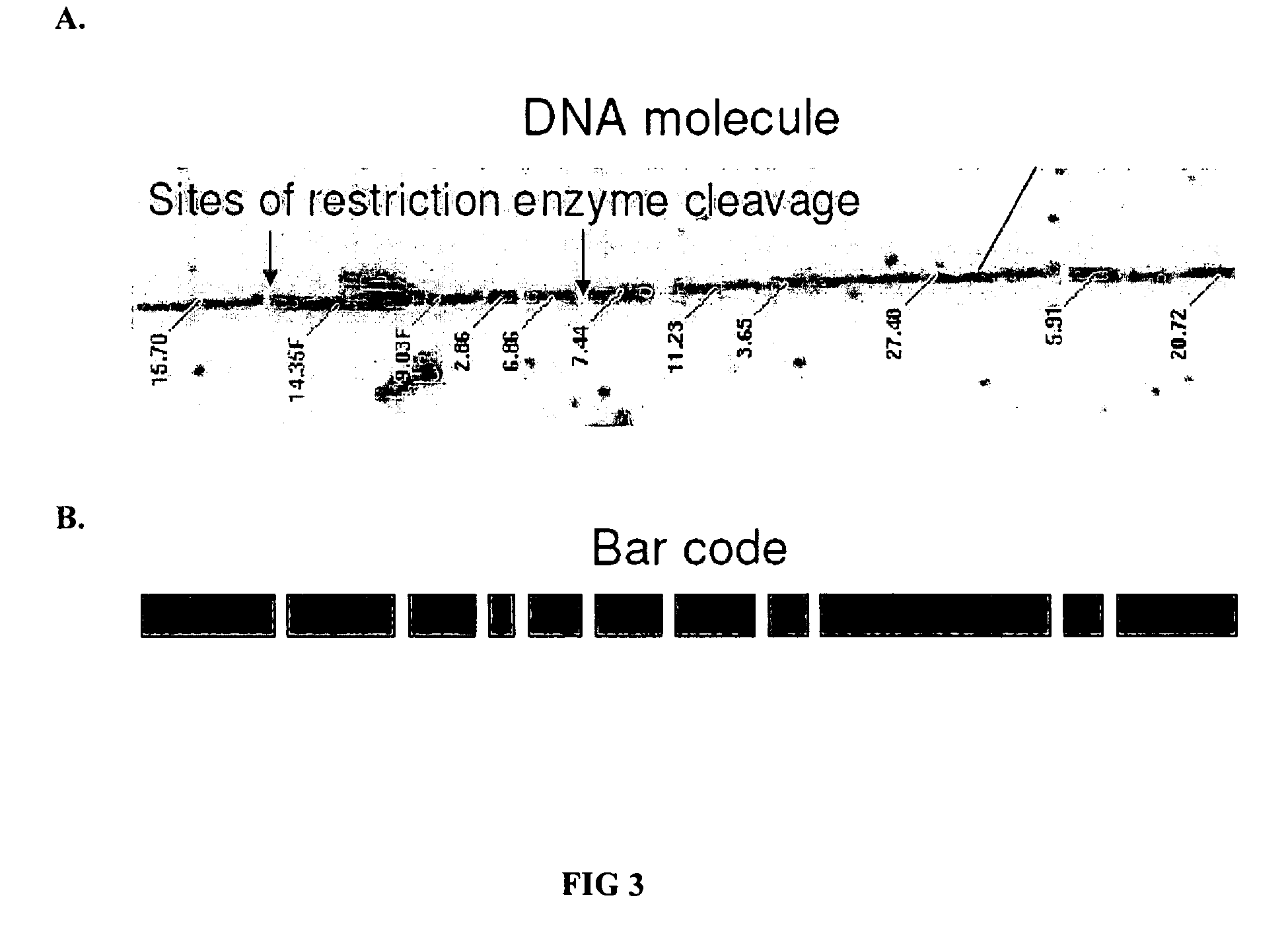Whole genome methylation profiles via single molecule analysis
a single molecule, whole genome technology, applied in microbiological testing/measurement, fermentation, biochemistry apparatus and processes, etc., can solve the problems of oncogenic insertion mutation, chromosomal aberration, and need to know the locus
- Summary
- Abstract
- Description
- Claims
- Application Information
AI Technical Summary
Benefits of technology
Problems solved by technology
Method used
Image
Examples
example 1
Optical Mapping with Methylation-Sensitive Restriction Endonucleases
[0062]A. thaliana was studied as a model system for the following reasons: (1) the A. thaliana genome is small, 120 MB; (2) the A. thaliana genome is sequenced and annotated; (3) the A. thaliana genome contains a total of 2,786,890 CpGs; (4) the A. thaliana genome has cytosine methylation at both CpG and CpNpG sites; and (5) the A. thaliana genome has a relatively low level of genomic repeats when compared to genome's of other organisms.
[0063] A T87 cell line of A. thaliana was grown in the presence of 2,4-dichlorophenoxyacetic acid (2,4-D). 2,4-D induces not only a change in the morphology of the cell, but also a change in the methylation profile of the cell. The T87 cell line was initiated in 1992 from the Columbia ecotype of A. thaliana—the same ecotype that has been sequenced.
[0064] A DNA isolation protocol solves the problems of chlorophyll contamination of DNA, of cell wall debris and of starch granules. Th...
example 2
Detecting Endogenous and Exogenous Methylation in a Genome
[0072] AluI methylase methylates cytosine in AGCT, while NheI cleaves DNA at GCTAGC. AluI methylation thus produces an overlap of NheI cleavage sites at 5′-AGCTAGC-3′ and 3′-GCTAGCT-5′. The E. coli genome contains 158 NheI cleavage sites. NheI cleavage is blocked by cytosine methylation and, therefore, longer restriction fragments are generated when NheI digests methylated, as opposed to unmethylated DNA.
[0073]E. coli DNA molecules were methylated de novo using AluI methylase and then were cleaved with NheI. A circular contig map of the resulting fragments generated from an optical mapping display of 176 resulting maps (twenty-fold coverage of the E. coli genome) was compared to an in silico NheI map of the E. coli genome. This model was used to avoid issues with non-clonality and to assess errors.
[0074] Dcm methylation of the inner cytosine in a CCWTT sequence occurs naturally in wild-type E. coli, including the MG1655 st...
example 3
Using Sequential and Simultaneous Multiple Restriction Endonuclease Digests in Optical Mapping of Methylation
[0076] For fine-scale methylation mapping, it can be advantageous to perform multiple restriction enzyme digests on the same isolated single genomic DNA molecules. The optical mapping system permits the re-identification of the same molecule after multiple digest. For example, one can first derive basic bar codes to index the DNA molecules using a first restriction enzyme that is unaffected by the state of CpG methylation, followed by a second digest using a methylation-sensitive restriction endonuclease to explore the methylation profile. FIG. 6A-D illustrate how to identify methylation sites using bar codes that result from multiple restriction digests. In FIG. 6A, the bar code expected from an optical mapping-based in silico digest of a single genomic DNA molecule with a first restriction endonuclease. FIG. 6B, C and D, align experimentally-derived bar codes produced by a...
PUM
| Property | Measurement | Unit |
|---|---|---|
| Digital information | aaaaa | aaaaa |
| Digital information | aaaaa | aaaaa |
| Digital information | aaaaa | aaaaa |
Abstract
Description
Claims
Application Information
 Login to View More
Login to View More - R&D
- Intellectual Property
- Life Sciences
- Materials
- Tech Scout
- Unparalleled Data Quality
- Higher Quality Content
- 60% Fewer Hallucinations
Browse by: Latest US Patents, China's latest patents, Technical Efficacy Thesaurus, Application Domain, Technology Topic, Popular Technical Reports.
© 2025 PatSnap. All rights reserved.Legal|Privacy policy|Modern Slavery Act Transparency Statement|Sitemap|About US| Contact US: help@patsnap.com



